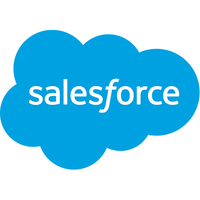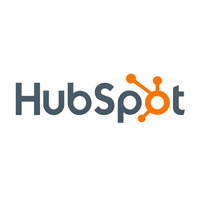How to set up Hubspot to Salesforce integration
Simple steps to integrate your Hubspot and Salesforce accounts in minutes
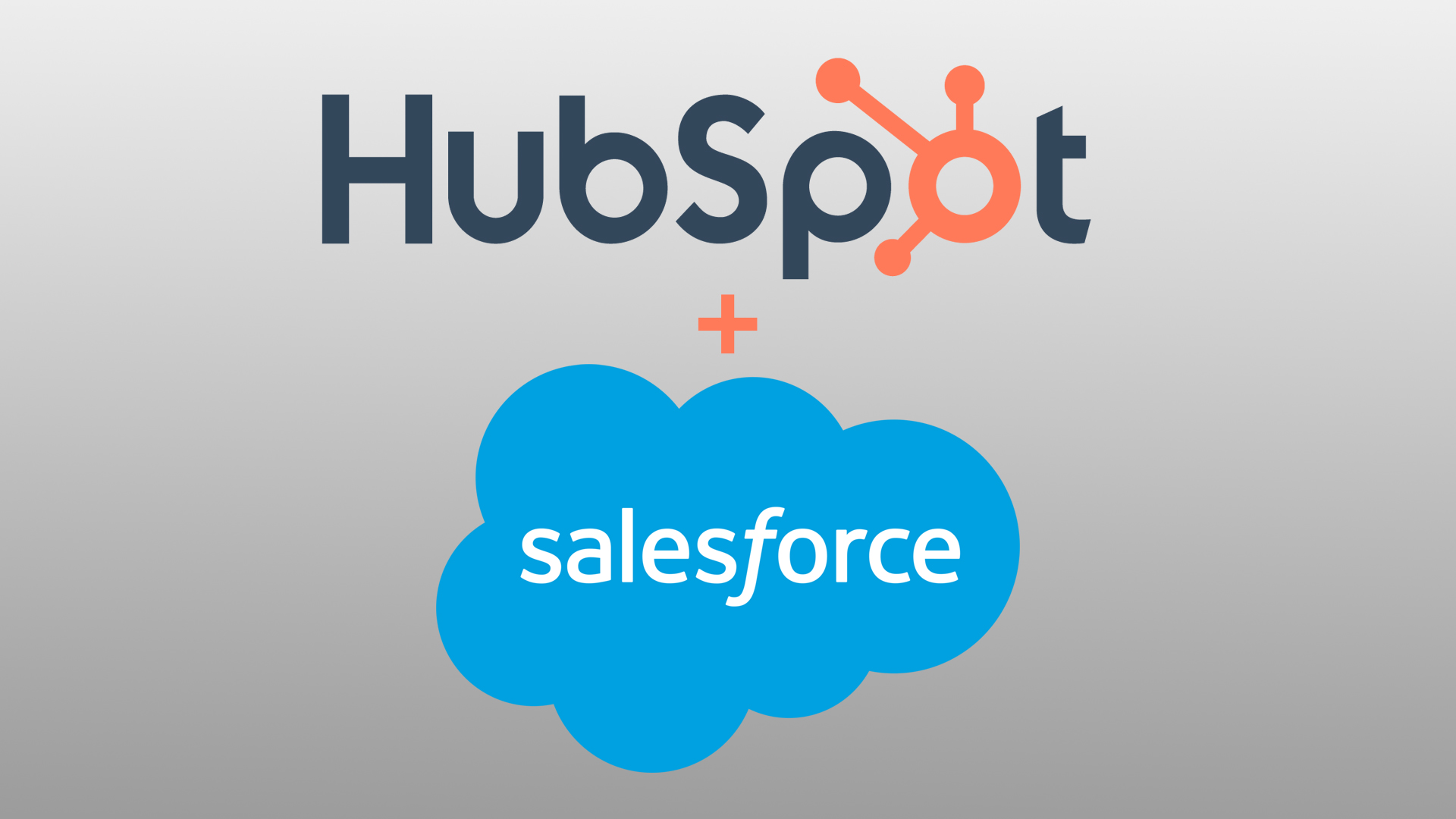
It can be difficult to make a choice when it comes to adopting the best CRM software for business. Hubspot and Salesforce are two giants in the CRM industry, and they offer different functionalities and benefits. But rather than choosing between them, many organizations opt to use both and implement the Hubspot to Salesforce integration so the two can work in tandem.
Integrating Hubspot and Salesforce unlocks powerful CRM, automation, and analytics capabilities as the two systems pass data back and forth across all your sales and marketing activities. Performing the integration setup is relatively straightforward and requires little technical know-how.
Today's best Salesforce and HubSpot deals
Get Salesforce from $25 per user/mo (US-only link)
Salesforce is the CRM software market-leader for good reason: it offers a comprehensive suite of customer relationship tools, excellent integration, and unrivalled customization. Follow this link to find out more.
Get HubSpot from $45 per user/mo
HubSpot offers an excellent free version of its CRM software—so you can try before you buy—but its paid plans is where it really comes into its own. Here, the core CRM is enriched with features from HubSpot’s Marketing, Sales, and Service Hubs. HubSpot's modern UI makes it great to use too.
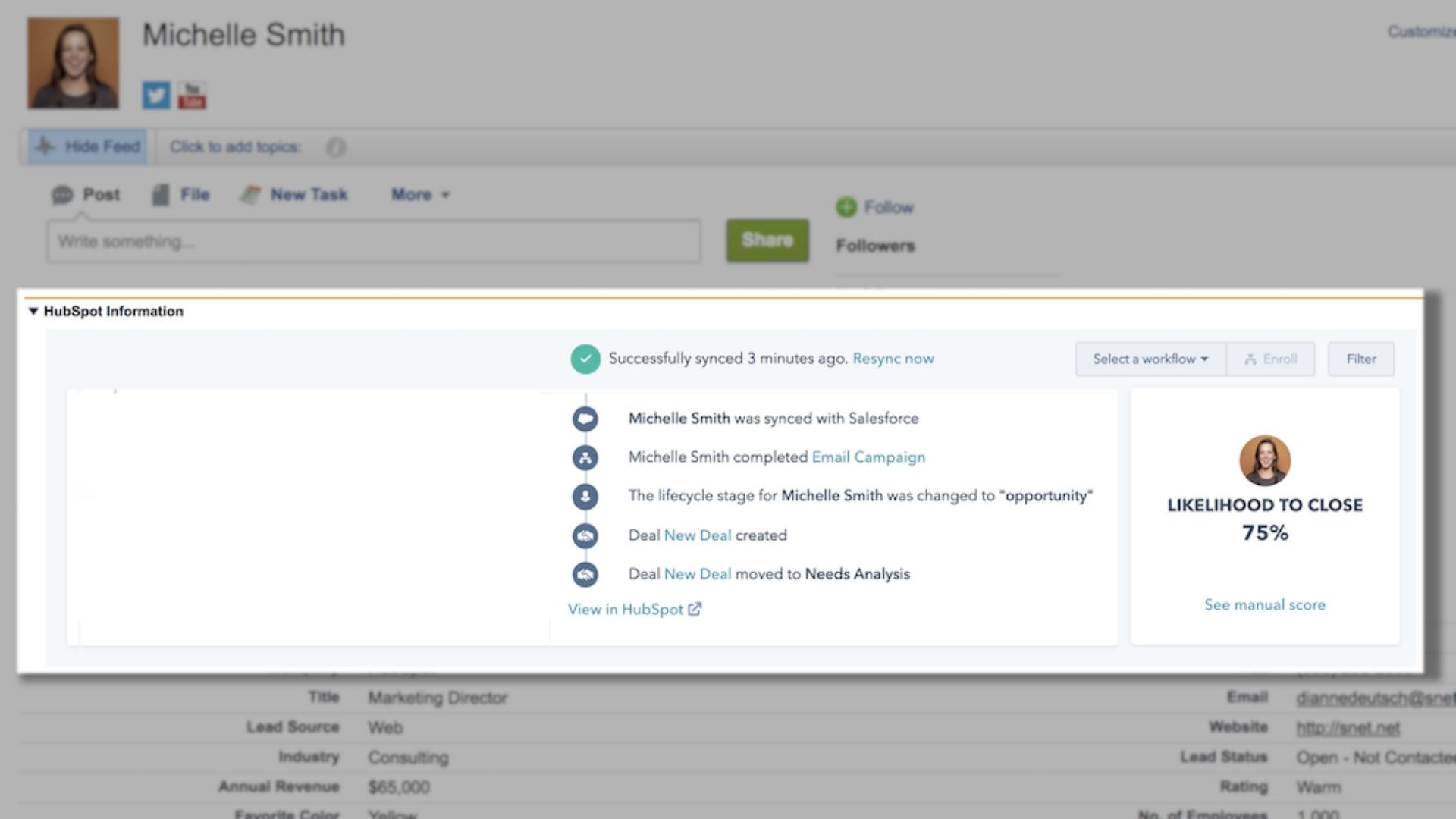
How to set up Hubspot to Salesforce integration: Preparation
You must have specific account permissions in place on both Hubspot and Salesforce to complete the integration process. On Hubspot, you will need to have admin-level access. On Salesforce, system administrators have the permissions required. Alternatively, a system administrator can enable a specific Hubspot Integration permission on your account so you can perform the process.
You’ll also need an API-enabled Salesforce account since the integration uses API calls to sync data between the two platforms. Other required permissions include the ability to modify all object types that you plan to sync between Hubspot and Salesforce. This includes contacts, accounts, and any other object you want to sync.
If you’re planning on accessing the Hubspot Visualforce view on your Salesforce objects, make sure to enable the Modify Metadata permission on your Salesforce account. You’ll also need this if you’re planning to sync deals between Hubspot and Salesforce.
Hubspot will ask you to map fields between your Hubspot and Salesforce accounts during the integration process. For example, your contact First Name field in Hubspot needs to be mapped to your First Name field on Salesforce and so on. You may need to create custom fields on Hubspot if they don’t already exist for some of the Salesforce fields you want to map. Before you get started with the integration, it’s a good idea to create a complete field mapping document so that you’re fully prepared.
Step 1: Install the Salesforce integration via Hubspot
You'll complete most of the integration process within your Hubspot account. You will be temporarily redirected to Salesforce a couple of times throughout the process.
Are you a pro? Subscribe to our newsletter
Sign up to the TechRadar Pro newsletter to get all the top news, opinion, features and guidance your business needs to succeed!
First, go to your Hubspot account and click the Marketplace icon on the top right-hand side of the screen (beside the settings icon). From the marketplace, you can search for the Salesforce app.

Click on the Salesforce app option and hit the Install button. A window will appear where you can enter your Salesforce login to begin the integration process.
Step 2: Install Hubspot into your Salesforce account
The next step is to install Hubspot into your Salesforce account. You’ll see a hyperlinked message that says, “Start the Salesforce package installation to begin.” Click this link, and Salesforce will open in a new tab with the Hubspot installation package already open. All you have to do is tick the Install for All Users option and hit the Install button.
The process may take a few minutes to complete, and you’ll receive an email from Salesforce to confirm. After that, go back to the Hubspot window you left open and hit Next.
Step 3: Opt in for Hubspot’s VisualForce module
Hubspot VisualForce is a window that appears on your contact and lead records in Salesforce as part of the integration. It shows you all the contact’s activity right within Salesforce and how likely they are to close. During this step, you can add the Visualforce view to Salesforce. If you’re not sure, you can always add it later.
If you choose to add the module now, you’ll redirect to Salesforce briefly and go through a few simple steps to format the Hubspot Visualforce view. When that’s done, navigate back to the Hubspot integration window and click Next.
Step 4: Decide how the two apps will sync data
Hubspot provides a recommended set-up option at this point in terms of mapping fields and syncing data between the two platforms. This might be the best option if you have a fairly straightforward or out of the box Salesforce set-up. You’ll always have the opportunity to go back and change the field mappings later if needed.
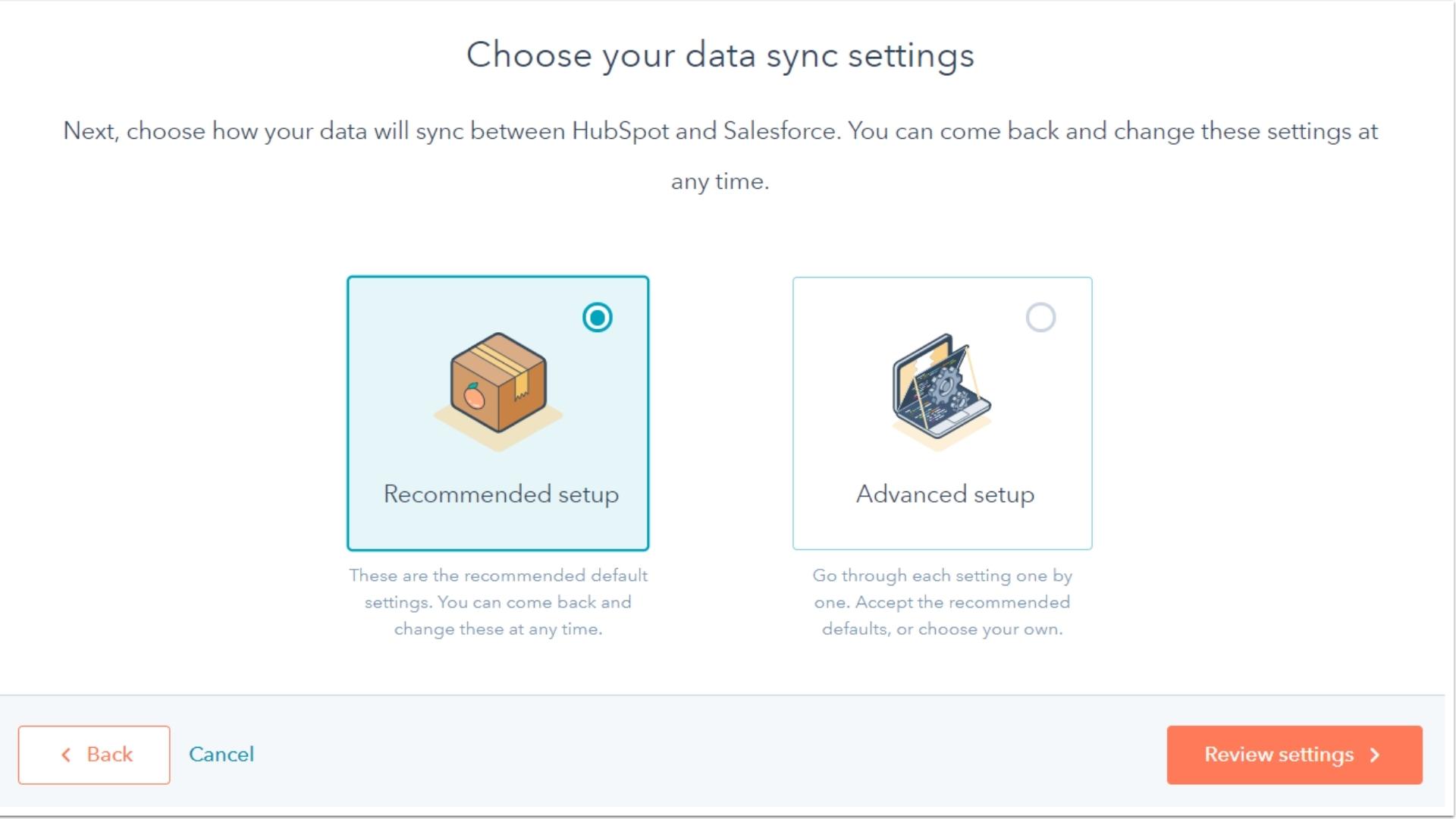
If you choose the recommended set-up, but some of your Salesforce properties do not have Hubspot matching equivalents, Hubspot will automatically create new custom fields.
This may become confusing and tricky to fix later on if the mapping is incorrect. For that reason, many users opt for the Advanced set-up option instead.
Step 5: Decide which contacts to sync
If you select Advanced set-up, the following screens will contain step-by-step instructions on mapping different fields and objects between the two platforms.
The first step in this process is choosing which contact records to sync. You can choose to sync all contacts or upload a contact list to Hubspot. If you’ve uploaded a list, you can select it from a dropdown list on this screen.
Step 6: Sync your activities and tasks
The next step in the syncing process is activities and tasks.
If you switch on the Salesforce task sync, any time a task is created in your Salesforce account, Hubspot will create an equivalent task.
The next section is the Timeline sync. Here, you can choose which events in Hubspot automatically create tasks in Salesforce and map them according to your sales and marketing processes. For example, a lead submitting a Hubspot form might generate a call task on the equivalent Salesforce record.
Step 7: Sync your properties and objects
After hitting Next, you’ll move on to your properties and objects syncing options. You’ll be mapping fields across your Hubspot contacts, companies, and deals.
This process can take a while if you’ve got lots of fields to map under each object type. But it’s an excellent way to ensure your mapping is entirely correct before switching on the integration.
Switch on the Enable company sync option for companies and deals. This sync will already be done for contacts. Then move through each of the three tabs and map the object fields in Hubspot to your Salesforce equivalent.
Step 8: Choose your sync type for each property
This step will decide how and when data is passed back and forth between the two platforms and when fields will update. You can select from three options.
The Prefer Salesforce option means that Hubspot data will only pass to Salesforce if the field is blank in Salesforce.
Under the Always Use Salesforce option, Hubspot will never pass data to Salesforce, and Salesforce data will always overwrite the existing Hubspot value.
The Two-way option is popular as it keeps all data consistent between the two platforms. Any time a field updates in either platform, it will also update in the other.
Once you choose your preferred sync settings for each object, hit Next.
Step 9: Finish the set-up
At this point, a short review window will appear that provides a summary of your sync settings across contacts, activities, and objects. If you want to change anything, you can click Change beside any one of these categories and amend the sync setting.

Once you’re satisfied, click on Finish set-up. Hubspot will bring you back to the overall Salesforce integration settings view and data will immediately begin syncing between the two.
Step 10: Import your Salesforce records to Hubspot
The final step is to import your Salesforce data into Hubspot. You can import all data or choose specific objects (leads, accounts, campaigns, etc.). Starting with one object is a good way to test if the sync is working as expected before bringing in the rest of your Salesforce records.
Go to Hubspot and click into the Contacts area. Select Import from the top right-hand side and select Start an Import. Choose Integrations from the options and hit Next to choose Salesforce. Select Standard Objects and click Everything to do the entire import at once.
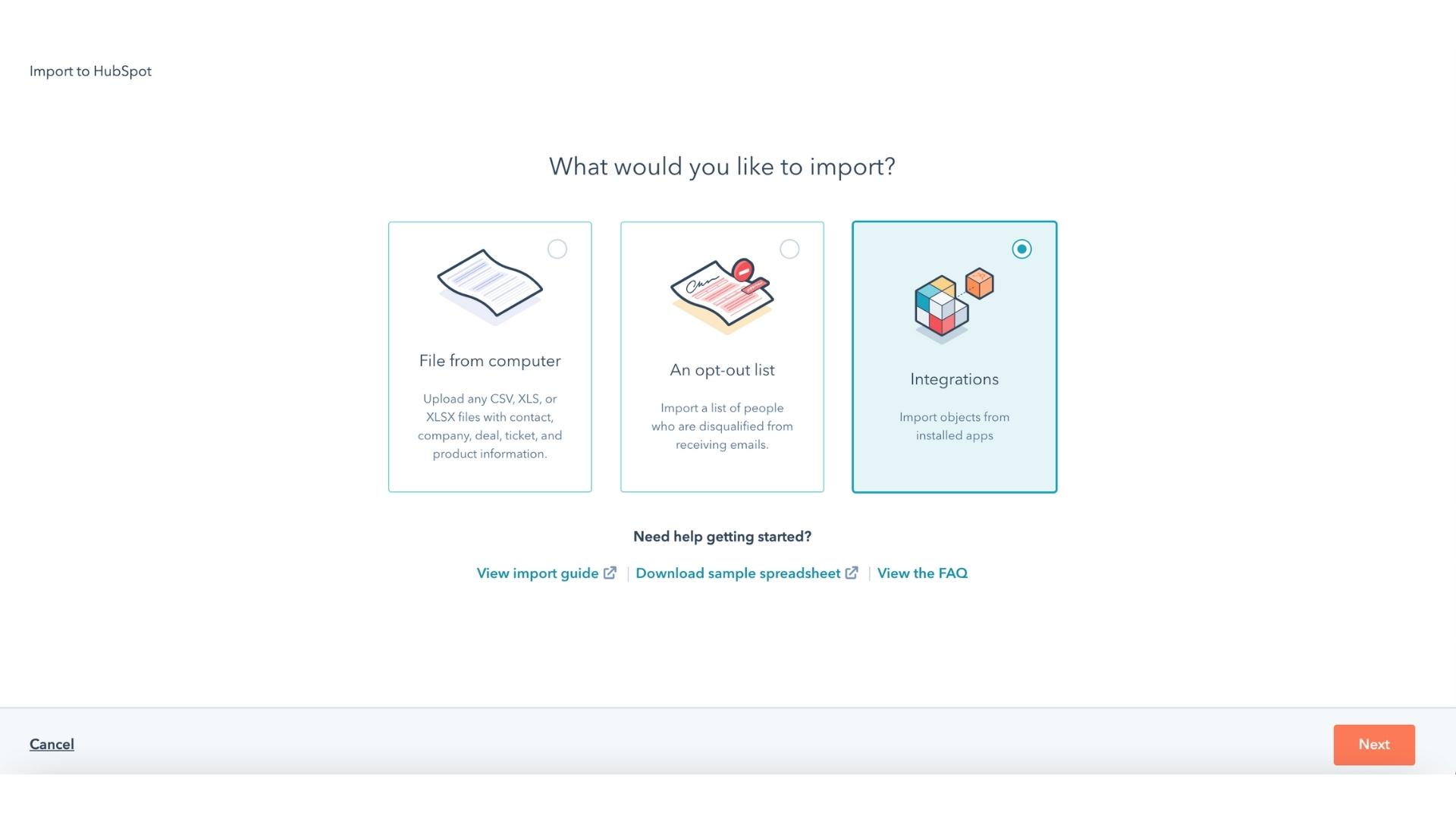
Click the Review button and confirm the import. Large amounts of data can take a long time to import, but you’ll receive an in-app notification from Hubspot when it’s done.
Step 11: Review your integration and sync settings
If something goes wrong or you want to make a change to the integration or data sync settings, you can revisit any of these steps in Hubspot at any time.
Click on the Settings gear icon in the main navigation bar on Hubspot. Click the Integrations dropdown on the left-hand panel and go into Connected apps. Search for Salesforce and choose Go to settings from the Actions dropdown.
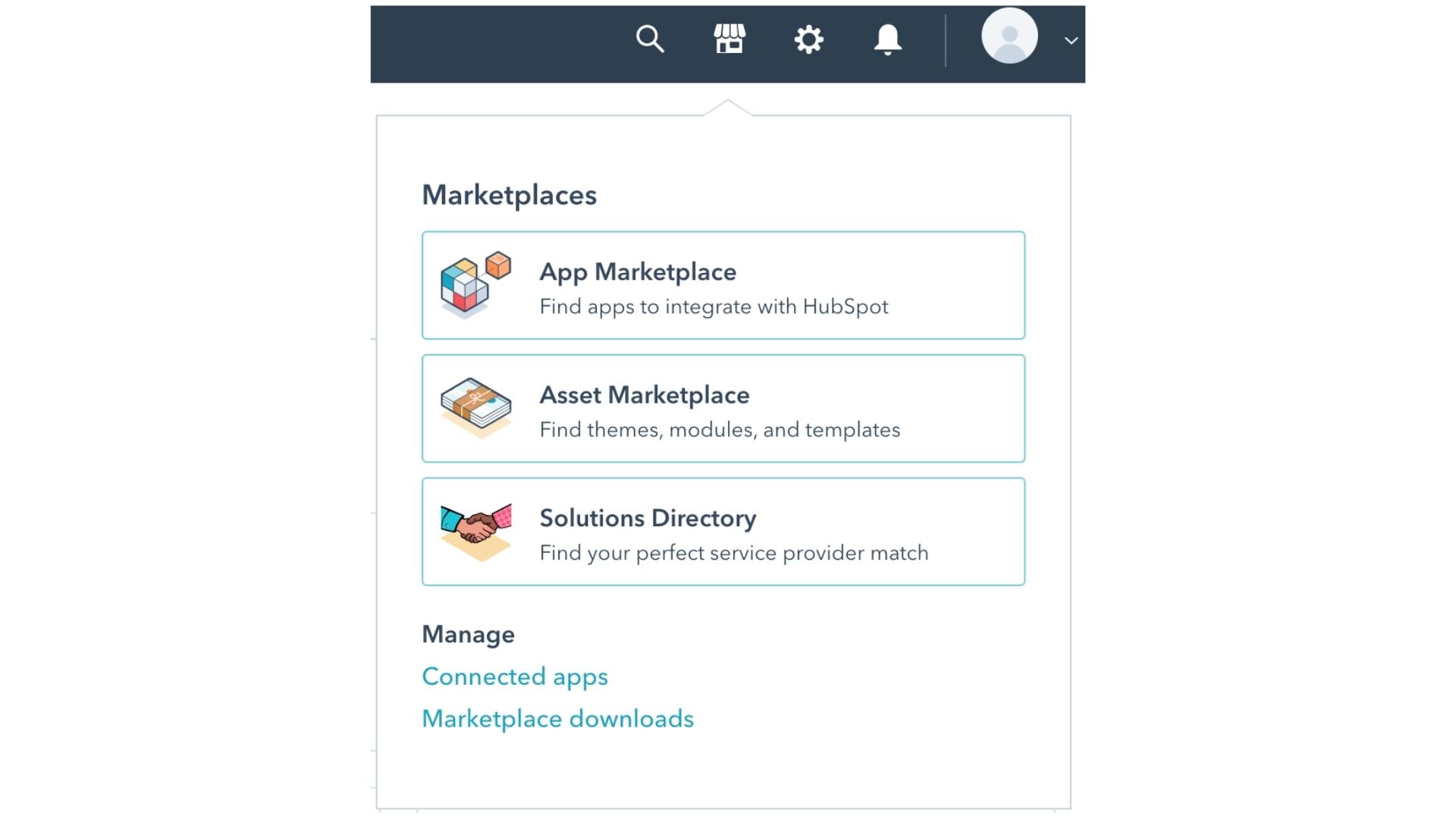
Summary
Once you connect your Hubspot and Salesforce data through this integration, you can combine the power of both platforms into seamless sales and marketing operations and workflows. With Hubspot’s marketing activities flowing directly to Salesforce, the integration can influence the timeliness and impact of your activities and tasks for better sales outcomes.
Learn more about the benefits and features of Hubspot as a CRM in our best CRM software buying guide. Or, if you’re interested in getting the most from your Salesforce data, check out our guide on how to set up Salesforce with Tableau business analytics.
Lauren holds a degree in marketing from Griffith College, Dublin, and brings more than five years’ experience as a marketing services advisor and marketing executive to her writing. An expert in SEO, copywriting, email marketing, analytics and more, Lauren has worked for the likes of the Bank of Ireland, Irish Stock Exchange, and the Yellow Pages.
